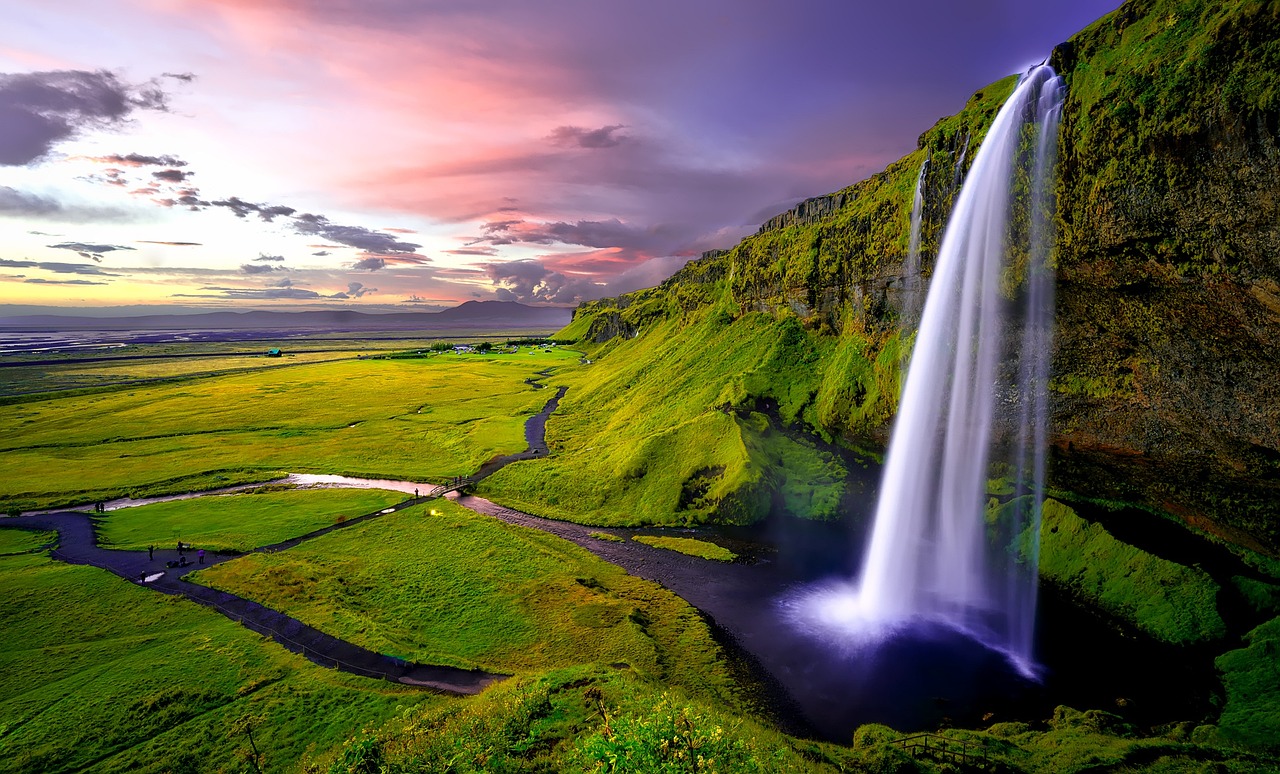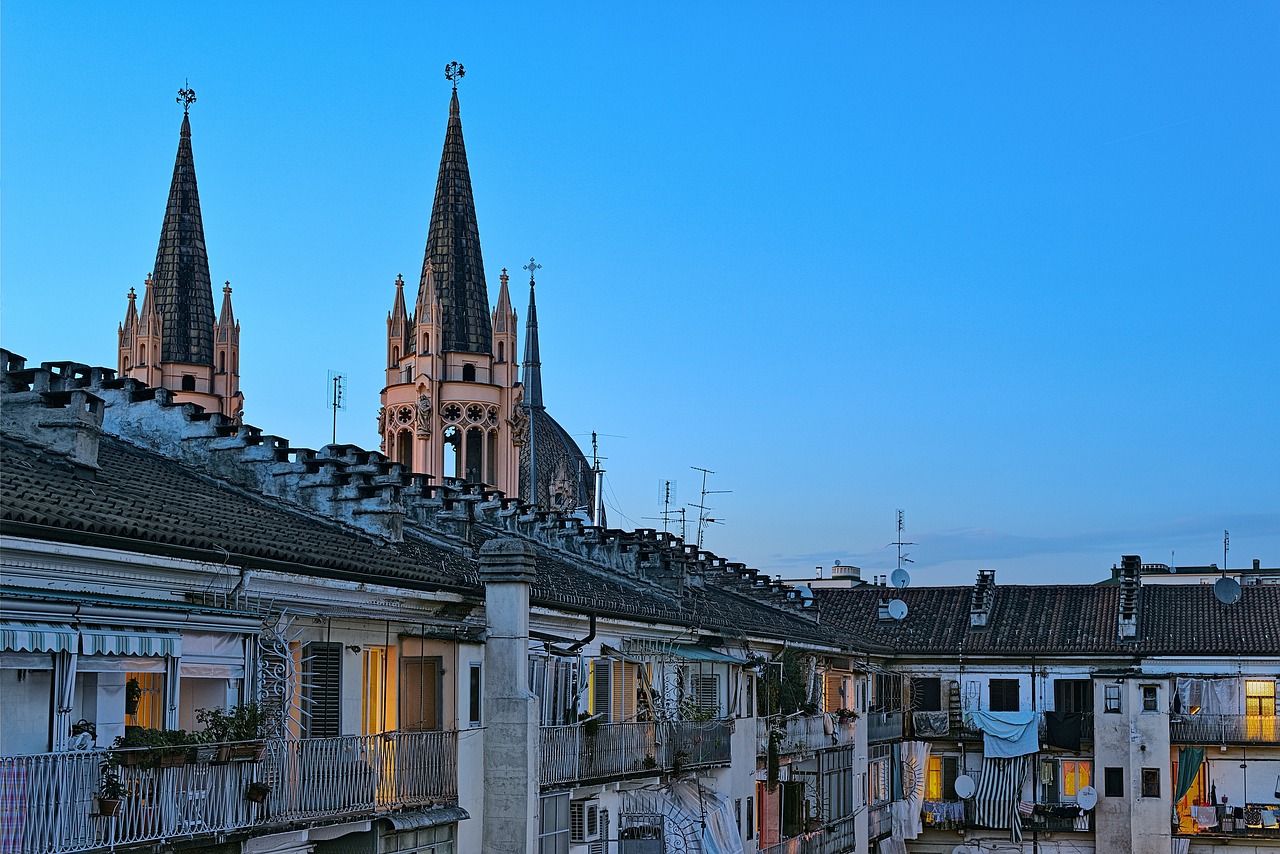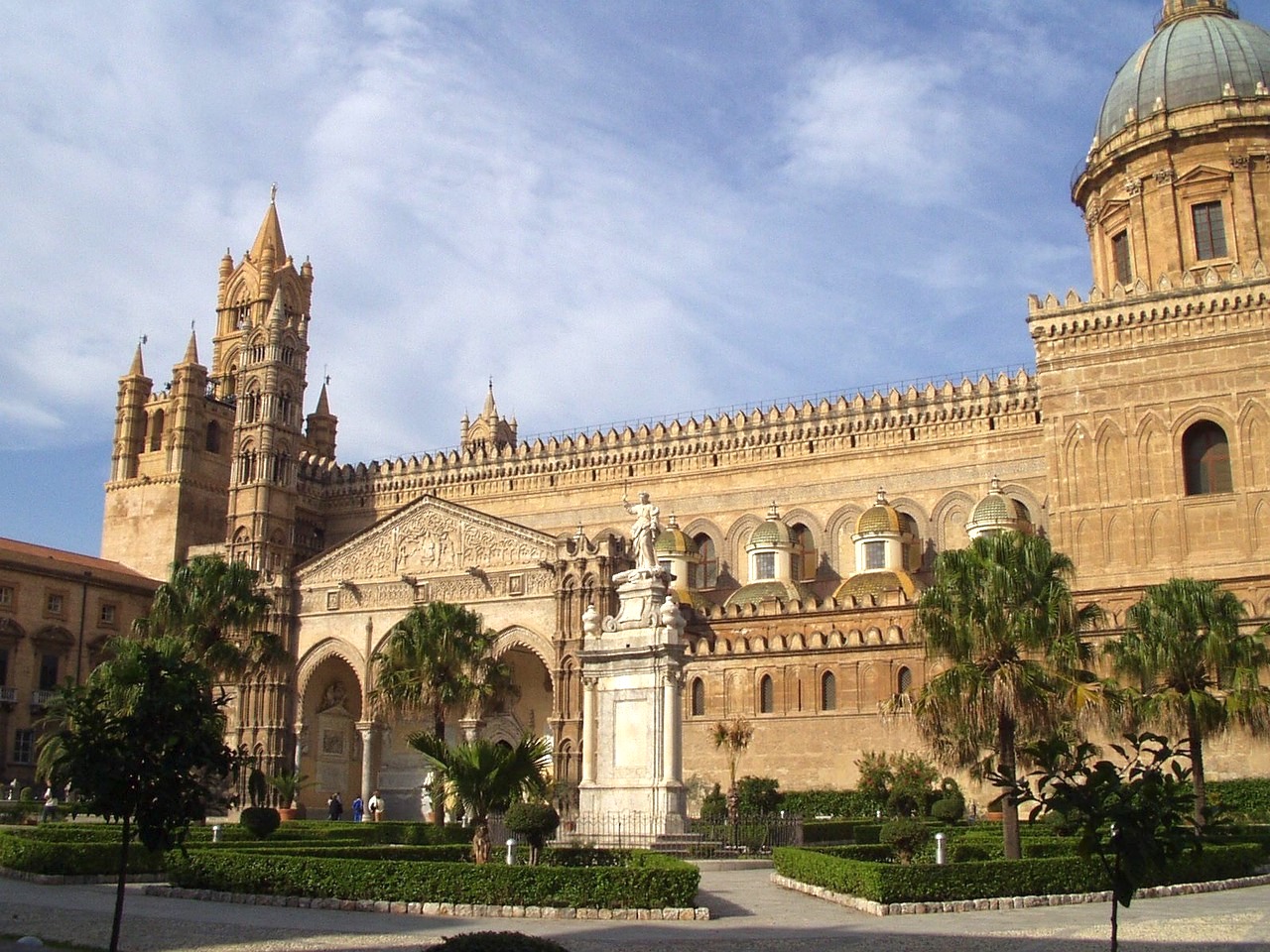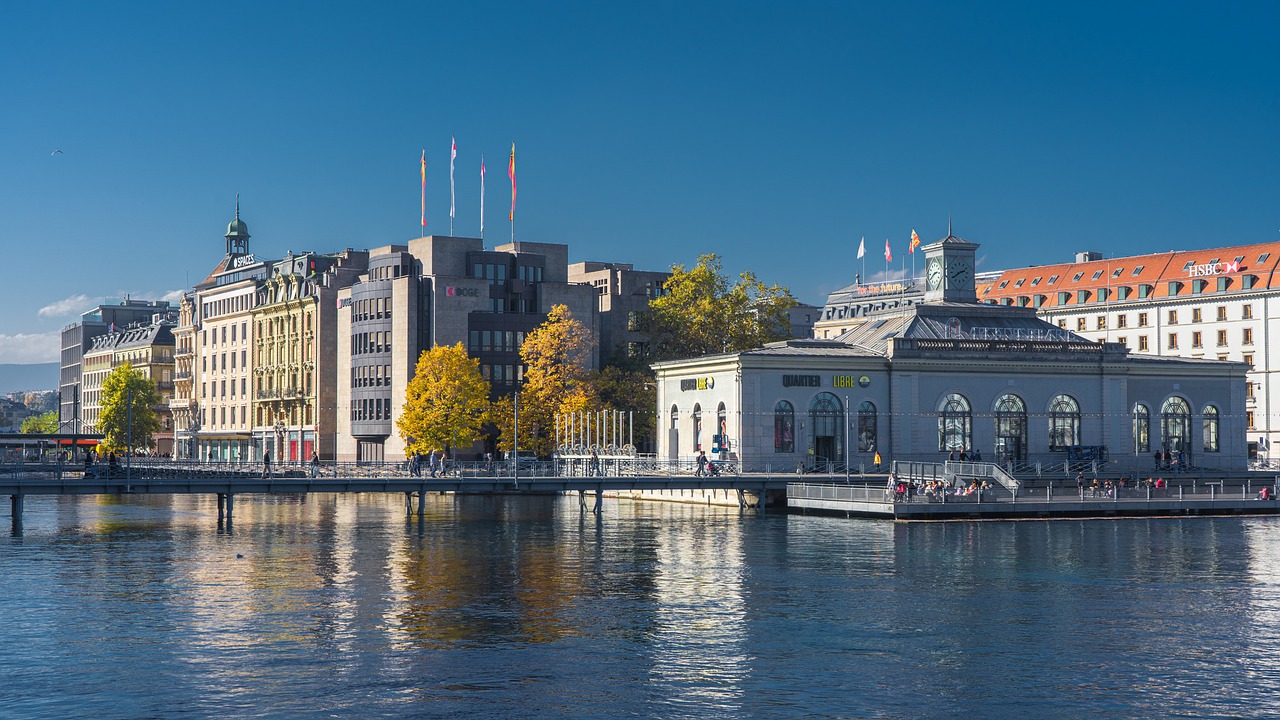Iceland is a Nordic island country located in the North Atlantic, between Greenland and Norway. It is located about 800 km northwest of Scotland and about 970 km west of Norway. The country has a population of around 360,000 people and covers an area of approximately 103,000 square kilometers. Iceland is known for its unique and stunning natural landscapes, including glaciers, hot springs, geysers, and volcanoes.
The capital and largest city is Reykjavik. It is located on the southwestern coast of the country, near the Faxaflói Bay. The city has a population of approximately 130,000 people, which represents more than one-third of Iceland’s total population. Reykjavik is known for its colorful buildings, vibrant cultural scene, and stunning natural beauty, including nearby mountains and the Northern Lights. It is also a hub for tourism and serves as the gateway to many of Iceland’s most popular attractions, including the Blue Lagoon, the Golden Circle, and the Snæfellsnes Peninsula.
Iceland is a unique and fascinating country that offers a wealth of natural beauty, culture, and adventure for visitors to discover and enjoy.
Short History
Iceland was first settled by Norse seafarers in the late 9th century. These settlers established a parliamentary government and a unique cultural identity that was heavily influenced by Norse mythology and legends. In the centuries that followed, Iceland became an important center for fishing and trade, and its people developed a thriving literary and artistic culture. Iceland gained independence from Denmark in 1944 and has since become one of the wealthiest and most developed countries in the world. Today, Iceland is known for its progressive politics, strong environmental policies, and innovative approach to sustainable living.
Architecture
Icelandic architecture is influenced by the country’s natural surroundings and its history. Traditional Icelandic architecture features turf houses, which were built by early settlers to protect against the harsh climate. These homes were constructed by burying a wooden frame in the ground and covering it with turf, which provided insulation and protection from the wind.
In modern times, Icelandic architecture has evolved to incorporate more modern styles and materials. The Harpa Concert Hall and Conference Centre in Reykjavik, designed by the Danish architectural firm Henning Larsen, is one of the country’s most iconic modern structures. Its shimmering glass façade was inspired by the country’s glaciers and was designed to reflect the constantly changing light of the Icelandic sky.
Other notable examples of Icelandic architecture include the Hallgrímskirkja church in Reykjavik, which features a distinctive expressionist style and a towering spire that dominates the city skyline. The Perlan Museum, also located in Reykjavik, is a unique structure that was built on top of six giant hot water tanks and offers stunning views of the surrounding landscape.
Museums and Galleries
Iceland is home to several museums and galleries that offer unique insights into the country’s culture, history, and natural environment. Some of the most interesting museums and galleries in Iceland include:
- The National Museum of Iceland: This museum features exhibits that trace the history of Iceland from its settlement to modern times.
- The Icelandic Phallological Museum: This unusual museum is dedicated to the study and display of the penis, with over 200 specimens from various animals on display.
- The Reykjavik Art Museum: This museum features contemporary and modern art from Icelandic and international artists.
- The Saga Museum: This museum offers a unique way to learn about Iceland’s history through interactive exhibits and lifelike wax figures.
- The Icelandic Punk Museum: This small museum is dedicated to the history of punk rock in Iceland, with exhibits featuring posters, clothing, and other memorabilia.
- The Aurora Reykjavik Northern Lights Center: This museum offers visitors an immersive experience of the Northern Lights through high-definition videos and interactive displays.
- The Whales of Iceland Exhibition: This exhibit showcases life-sized models of various species of whales found in Icelandic waters, and offers information about the history and culture of whaling in Iceland.
Iceland’s museums and galleries offer a unique and diverse range of experiences that are sure to appeal to a wide range of interests.
Landmarks and Monuments
Iceland is home to some of the most stunning natural landmarks and monuments in the world, as well as several man-made structures of cultural and historical significance. Some of the most interesting landmarks and monuments in Iceland include:
- The Blue Lagoon: This geothermal spa is one of Iceland’s most popular attractions, featuring warm, mineral-rich waters that are said to have healing properties.
- Gullfoss Waterfall: This magnificent waterfall is located on the Golden Circle, a popular tourist route that showcases some of Iceland’s most famous natural wonders.
- Jökulsárlón Glacier Lagoon: This breathtaking lagoon is filled with icebergs that have broken off from the nearby glacier, creating a surreal and otherworldly landscape.
- Hallgrímskirkja: This iconic church in Reykjavik features a distinctive expressionist style and a towering spire that dominates the city skyline.
- Thingvellir National Park: This park is not only a stunning natural landscape but also an important historical site, where Iceland’s parliament was founded over 1,000 years ago.
- The Sun Voyager: This striking sculpture by Icelandic artist Jón Gunnar Árnason is located on the Reykjavik waterfront and is said to represent a dream of hope, progress, and freedom.
- Skógafoss Waterfall: This impressive waterfall is one of the largest in Iceland, and its thundering cascade can be seen from miles away.
Iceland’s landmarks and monuments offer a unique and awe-inspiring glimpse into the country’s natural and cultural heritage.
Parks and Green Spaces
Iceland is known for its stunning natural landscapes, including numerous parks and green spaces that are ideal for hiking, camping, and enjoying the great outdoors. Some of the most beautiful parks and green spaces in Iceland include:
- Vatnajökull National Park: This park is home to the largest glacier in Europe, as well as numerous other natural wonders like waterfalls, hot springs, and volcanic landscapes.
- Thingvellir National Park: This park is not only historically significant, but also features stunning natural scenery including a rift valley, volcanic craters, and sparkling lakes.
- Skaftafell National Park: Located in the southern part of Iceland, this park boasts breathtaking views of glaciers, waterfalls, and rugged mountain peaks.
- Snæfellsjökull National Park: This park is named after the famous glacier-capped volcano that is said to be the entrance to the center of the earth in Jules Verne’s “Journey to the Center of the Earth.”
- Reykjavik Botanical Garden: This beautiful garden in the heart of Reykjavik features a wide variety of plant species from around the world, as well as a scenic lake and walking paths.
- Elliðaárdalur Valley: This peaceful green space in Reykjavik features a scenic river, walking trails, and picnic areas.
- Hveragerði Hot Springs: This small town is known for its geothermal activity, and features numerous hot springs and hiking trails that offer stunning views of the surrounding landscape.
Iceland’s parks and green spaces are some of the most breathtaking and unique in the world, and are sure to leave a lasting impression on any visitor.
Shopping Districts
Iceland is not particularly known for its shopping scene, but there are still a number of shopping districts and areas worth checking out. Here are some of the most notable:
- Laugavegur: This street in Reykjavik is the city’s main shopping district, featuring a mix of local boutiques, souvenir shops, and international brands.
- Kringlan: This shopping mall in Reykjavik is one of the largest in Iceland, and features over 150 stores and restaurants.
- Smáralind: Another large shopping mall located in the city of Kópavogur, just outside of Reykjavik.
- Akureyri: This charming town in northern Iceland is home to a number of local shops and boutiques selling handmade crafts and souvenirs.
- Skólavörðustígur: This street in Reykjavik is known for its trendy shops and boutiques, featuring everything from fashion and accessories to home goods and design.
While Iceland may not be a shopping destination in the traditional sense, there are still plenty of unique and interesting shops and districts to explore, offering a glimpse into the country’s unique culture and design aesthetic.
Food and Drink
Icelandic cuisine is known for its focus on fresh, locally-sourced ingredients, often featuring seafood and lamb. Here are some traditional Icelandic dishes and drinks to try:
- Plokkfiskur: A classic Icelandic fish stew made with potatoes and flaky white fish.
- Hangikjöt: A smoked lamb dish typically served with boiled potatoes and a creamy white sauce.
- Skyr: A thick, tangy dairy product similar to Greek yogurt, often eaten with fresh berries or honey.
- Rúgbrauð: A dense, dark rye bread often served with smoked salmon or other seafood.
- Brennivín: A traditional Icelandic schnapps made from fermented potato mash and flavored with caraway seeds.
- Icelandic craft beer: The country’s craft beer scene has exploded in recent years, with a wide variety of unique and flavorful brews to try.
- Jökulsárlón Glacier Lagoon Coffee: A specialty coffee made with ice harvested from the Jökulsárlón Glacier Lagoon, giving it a unique and refreshing flavor.
- Harðfiskur: Dried fish that is a popular snack in Iceland, often served with butter or a creamy dip.
Icelandic cuisine is simple yet flavorful, and emphasizes the use of fresh, high-quality ingredients. Whether you’re looking to try traditional Icelandic dishes or explore the country’s burgeoning craft beer scene, there’s no shortage of delicious food and drink to enjoy in Iceland.
Transportation
The best ways to move around Iceland depend on the length of your stay and the areas you want to explore. Here are some transportation options to consider:
- Car Rental: Renting a car is one of the most popular and convenient ways to explore Iceland, especially if you want to venture beyond the main cities. There are a number of car rental companies available, and most offer 4×4 vehicles equipped for Iceland’s rugged terrain.
- Public Bus: Iceland has a well-developed bus system that connects most major towns and cities. However, schedules can be limited in some areas, and may not be as convenient for exploring more remote parts of the country.
- Private Tours: If you want to explore Iceland’s natural wonders with a knowledgeable guide, there are a number of private tour options available, ranging from day trips to multi-day excursions.
- Domestic Flights: Iceland has a number of domestic airlines that offer flights between Reykjavik and other parts of the country, which can be a convenient option for travelers with limited time.
- Bicycles: If you’re looking for a more active way to explore Iceland, there are a number of bicycle rental companies available in Reykjavik and other cities.
- Hitchhiking: While not the most conventional method, hitchhiking is a popular way for budget travelers to get around Iceland, especially during the summer months when there is more traffic.
Overall, Iceland is a relatively easy country to get around, with a variety of transportation options available to suit different preferences and budgets.
Safety
Iceland is generally a very safe country to visit. Crime rates are low, and violent crime is rare. The biggest safety concerns for visitors are related to the country’s natural environment, such as the risk of getting lost or injured while hiking, or getting caught in sudden weather changes. Visitors should always be aware of their surroundings and take appropriate safety precautions, such as checking weather forecasts, staying on marked trails, and carrying appropriate gear and supplies. It’s also a good idea to check with local authorities or tour operators for advice and guidance on safe outdoor activities.
Expensive or Cheap
Iceland is known to be an expensive destination, especially when it comes to food, accommodation, and activities. This is due in part to the country’s isolated location, as many goods and services need to be imported from other countries. Additionally, the high cost of living in Iceland also contributes to the overall expense of travel.
That being said, there are ways to make a trip to Iceland more affordable. For example, visiting during the off-season (typically October to April) can often result in lower prices for flights and accommodations. Additionally, staying in hostels or guesthouses, self-catering meals, and using public transportation or carpooling can help reduce costs.
Overall, while Iceland can be an expensive destination, with careful planning and budgeting, it is still possible to enjoy a memorable trip without spending too much money.
Best Time to Travel

The best time to travel to Iceland depends on what you want to experience and see during your trip. Here are some things to consider:
- Summer (June-August): This is the most popular time to visit Iceland due to the warmer weather and long daylight hours. This is also the peak tourist season, which means that prices can be higher and crowds can be larger.
- Winter (December-February): Winter in Iceland can be harsh, with cold temperatures and limited daylight hours. However, this is also a great time to see the Northern Lights and enjoy winter activities such as ice caving, glacier hiking, and skiing.
- Shoulder season (May-June, September-October): During these months, the weather can be mild, and there are fewer tourists than in the summer. This can be a great time to enjoy outdoor activities and see the sights without the crowds.
Ultimately, the best time to visit Iceland depends on your personal preferences and what you want to experience during your trip.
Date Ideas
Iceland offers a unique and romantic setting for couples to explore and make memories together. Here are some date ideas to consider during your visit to Iceland:
- Take a dip in a natural hot spring, such as the famous Blue Lagoon or lesser-known hidden hot springs.
- Go on a scenic drive along the famous Ring Road, taking in the stunning landscape and making stops along the way.
- Enjoy a romantic dinner at a Michelin-starred restaurant, such as Dill or Matur og Drykkur.
- Take a guided glacier hike or ice cave tour together, exploring the icy blue wonders of Iceland.
- Experience the thrill of dog sledding through the snowy landscape.
- Go whale watching and enjoy the majestic beauty of these gentle giants.
- Take a nighttime Northern Lights tour, searching for the elusive Aurora Borealis.
- Explore the vibrant and colorful city of Reykjavik, with its charming cafes, museums, and galleries.
- Go on a horseback riding adventure, taking in the scenic beauty of Iceland on horseback.
- Enjoy a scenic helicopter tour over Iceland, taking in the breathtaking beauty from a bird’s-eye view.
Overall, Iceland offers a wealth of romantic and exciting experiences for couples to enjoy together, making it an unforgettable destination for a romantic getaway.
Fun and Interesting Facts
Iceland is a small island nation located in the North Atlantic Ocean, known for its stunning natural beauty, unique culture, and adventurous spirit. Here are some fun and interesting facts about Iceland:
- Iceland is home to some of the largest glaciers in Europe, covering approximately 11% of the country’s land area.
- Iceland is one of the most geologically active countries in the world, with over 200 volcanoes and countless geysers and hot springs.
- Iceland is a world leader in renewable energy, with almost 100% of its electricity coming from renewable sources such as geothermal and hydroelectric power.
- Icelanders have one of the highest life expectancies in the world, with an average lifespan of over 83 years.
- Icelandic horses are a unique breed, known for their small size, gentle temperament, and distinctive gait.
- The Icelandic language has remained relatively unchanged for over 1,000 years and is considered one of the most difficult languages to learn.
- Iceland is one of the best places in the world to see the Northern Lights, with frequent displays of this breathtaking natural phenomenon.
- Iceland is the only country in the world where you can see the mid-Atlantic ridge, which is the boundary between the North American and Eurasian tectonic plates.
- Iceland has no military and is considered one of the most peaceful and safe countries in the world.
- The Icelandic tradition of Jolabokaflod, or “Christmas book flood,” involves giving books as gifts on Christmas Eve and spending the night reading.
In conclusion, Iceland is a captivating country that is full of wonder and amazement. With its stunning landscapes, unique culture, and adventurous spirit, Iceland has something for everyone. From the Northern Lights to the hot springs, and the glaciers to the waterfalls, Iceland’s natural beauty is truly mesmerizing. The country’s commitment to renewable energy, peace, and safety also make it an inspiring and progressive place to visit. Whether you’re seeking adventure, relaxation, or a chance to explore a one-of-a-kind culture, Iceland is a destination that should not be missed.



